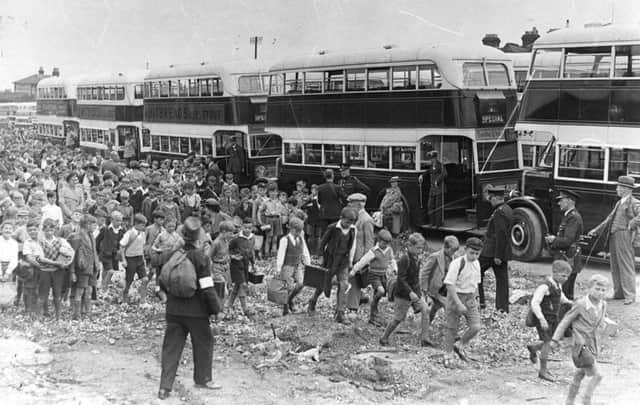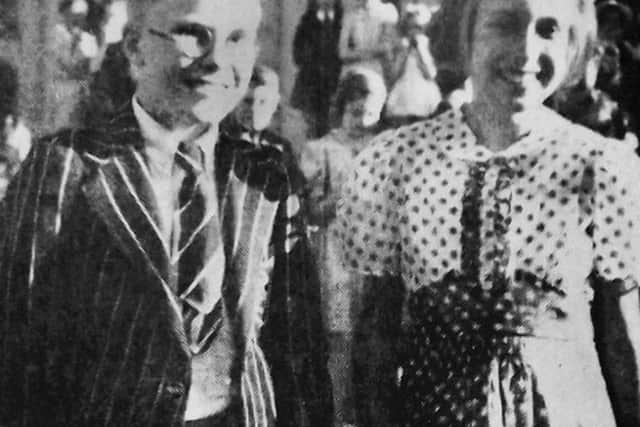Portsmouth evacuees despatched to South African sun


In those immediate weeks after war was declared the anticipated hordes of bombers raining terror from the skies above Portsmouth never happened and many of the thousands of children who had settled in homes, some happily others not so, were returned home.
This period was always referred to as the ‘Phoney War’ and children were reunited with their parents only for them to be killed later when the threatened blitz did finally overwhelm many cities.
Advertisement
Hide AdAdvertisement
Hide AdThe first bombing raid on Portsmouth was 10 months after the war began when on July 11, 1940, bombs landed in the Kingston Cross area of the city killing 18 people.


Although thousands were evacuated (up to 17,000 London children were expected to arrive in Chichester), not all remained in England.
Britain still had its empire countries, although then called the Commonwealth, and Canada and South Africa were thought to be safe countries to which to send children.
In 1940 five Portsmouth children and one from Gosport departed our shores for the long trip to the sunshine of South Africa.
Advertisement
Hide AdAdvertisement
Hide AdThe Portsmouth children were Patrick Allen, 10, and his brother Ian, five, of 34, Grayshott Road, along with John Draper, 10, of 38, Great Southsea Street. The remaining two, pictured, were Gordon and Eileen Bond of 34, Dunbar Road, Eastney.


The brother and sister settled with a Mr and Mrs JP du Pleasie in Waverley Road, Bloemfontein.
The pair dropped a line to their parents telling them of the delightful sea trip and how happy they were in their new surroundings.
‘We had first-class cabins with bunks on the liner and all our meals were served in the first- class saloon,’ they said.
Advertisement
Hide AdAdvertisement
Hide AdEileen also said in a letter home that they had to hand in their gas masks as there would be no need for them where they were going.
They also told of visiting one port where all the ‘natives’ came alongside in canoes and they threw pennies down for them to dive for.
On arrival at Cape Town newspaper photographers and reporters were there to meet them and the locals threw oranges, sweets and money on to the deck. On leaving the ship they went by bus to the governor general’s house.
The evacuees were from all over England and Scotland.
Eileen and Gordon then travelled 600-miles to Bloemfontein. One of the treats allowed to all evacuees was free entry to the cinema.
Advertisement
Hide AdAdvertisement
Hide AdWhat I want to know is, did these children ever come home? If you know of anyone who did go off to Africa, perhaps even Eileen and Gordon, I’d love to hear about them.
• I found an item of interest among the obituaries in Portsmouth’s Records of the Corporation.
Robert Blyth was a notable personality who died on April 5, 1941. He was one of the first professionals signed when Portsmouth Football Club was formed prior to the 1899/1900 season.
His career took him from player to chairman via intermediate positions – captain, player-manager, director and vice-chairman.
Advertisement
Hide AdAdvertisement
Hide AdHe appears to be a forgotten person in the annals of the club.
• Down the years there have been many suggestions about a tunnel under Portsmouth Harbour lining Portsmouth with Gosport. It was often a subject of some controversy.
Back in 1941 the city -council considered a report at a special meeting. What was on offer was a plan by Chalmers Kearney to place a Kearney Tube under the harbour for use as an air raid shelter, provided he could obtain the money from America.
There would have been no cost to the corporation and after the war the tunnel would have been handed over to Portsmouth and Gosport to run a railway through it.
Advertisement
Hide AdAdvertisement
Hide AdIt was resolved to take no action and was carried by 16 votes to 15.
Plans for a tunnel have been revived several time since, always with the same result.
• As we know, there are three main road exits from Portsea Island, but until 1939 there was just one, via Portsbridge.
In 1939 the council discussed building another road out of Portsmouth.
Advertisement
Hide AdAdvertisement
Hide AdThe passive air defence committee put forward a proposal for a £20,000 bridge to the east of Portsbridge. It would have linked Petreavie Road, Cosham, and Copnor Road via Peronne Road.
There was some argument, but in the end it was agreed and a tender for £15,000 was accepted.